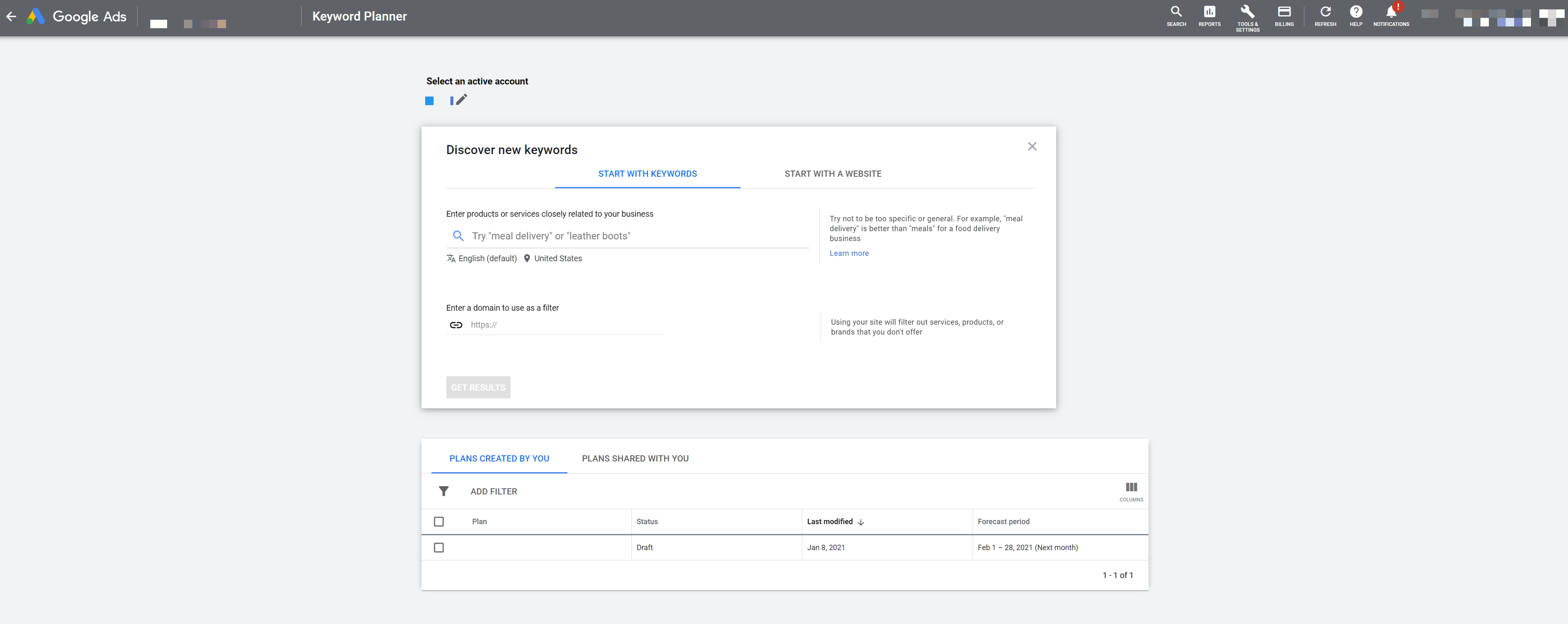-
 7 min. read
7 min. read
-
 Jessica Bonacci
Jessica Bonacci Content Writer
Content Writer
- Jessica is a Google Analytics certified Digital Video Analyst at WebFX. She has created over 100 videos for the WebFX YouTube channel (youtube.com/webfx) in the last two years. Jessica specializes in video marketing and also loves content marketing, SEO, social media marketing, and many other aspects of digital marketing. When she’s not creating videos, Jessica enjoys listening to music, reading, writing, and watching movies.
In this video, John from the Internet Marketing team has the scoop on Google Ads negative keywords. If you want to learn more Google Ads basics, check out our guide on how to use Google Ads! Otherwise, keep reading to learn how to maximize your ad potential by going negative.
Transcript: Sometimes, being negative is okay, especially when it comes to your Google Ads campaigns. I’m talking about negative keywords.
These words or phrases can help you see better results with your ad campaigns and put more of your investment towards people who actually want to spend money with your business.
So, what are negative keywords?
Negative keywords are words that help you avoid showing up for unwanted searches with your Google Ads campaigns. When you create certain ad campaigns through Google Ads, you different keywords so that people searching for a certain result or browsing a related website see your ads. But sometimes your ad may show up in front of people who aren’t quite interested in what you’re selling. Here’s a simple negative keywords example. Let’s say you fix instruments for a living. I’m talking trombones, cellos, flutes…those types of instruments.
To drum up business (pun intended), you run a Search ad campaign targeting “musical instrument repair.” In your research, you discover that a popular search using your keyword is “musical instrument repair courses.” You don’t want to reach people looking for a class on instrument repair. That’s not going to make you any money. So you’d want to use the negative keywords feature to make sure you don’t show up for “musical instrument repair courses” and any other terms that aren’t relevant to you. This can help you not only save money but also increase your ad performance.
How, you ask?
Learn How to Use Google Ads Performance Planner
How Google Ads negative keywords help your business
Google wants you to create a good user experience with your ads. This is where Quality Score comes into play. Quality Score is a measure of your ad quality on a 1-10 scale. Google Ads uses your expected click-through rate, your ad’s relevance to the user, and your landing page experience to determine your score.
A higher Quality Score can lead to lower campaign costs and better ad placements. Using negative keywords helps you narrow your ad targeting down to the most relevant searches, meaning your ad will reach the most relevant people. If people in the market for what you’re offering click on your ad, it’s likely they’ll spend time on your website. This tells Google that your ad is relevant, and your landing page is creating a good enough experience to keep users interested. Your Quality Score will get a boost, and since you’re using negative keywords to eliminate irrelevant terms, you’ll spend less money on clicks from people who aren’t going to become your customers.
Types of negative keywords
Before you start making your negative keywords list, you should know that there are a few types of negative keywords you can select for your ads: Negative exact match, negative phrase match, and negative broad match.
1. Negative exact match keywords
Negative exact match keywords are the least restrictive of the three match types. Your ads won’t appear if someone searches using the exact phrase you specify. So using the “musical instrument repair” example from earlier, if you make “musical instrument repair courses” your negative exact match keyword, you won’t show up for that phrase, but you may show up for other arrangements of the phrase like, “courses for musical instrument repair.”
2. Negative phrase match keywords
In terms of restrictiveness, negative phrase match falls somewhere between broad match and exact match. With this negative match type, you can exclude your unwanted phrases, but the words have to appear in the same order. Unlike negative exact match, the word or phrases you use for negative phrase match can have additional words attached to them. So let’s say you sell jewelry-making supplies to consumers, and you only sell in small quantities. You do some digging and notice your campaigns are appearing for “jewelry-making supplies in bulk.” That’s not something you offer, so you add “in bulk” to your negative phrase match keywords. Searches that won’t trigger your ads include “purchasing jewelry-making supplies in bulk” and “in bulk jewelry-making supplies.” Your ad may still appear for “bulk jewelry supplies” or any other similar searches that don’t use the full phrase, “in bulk.”
3. Negative broad match keywords
Negative broad match keywords restrict your ads the most, so use them wisely. With this type of negative keyword, your ad will not appear if a search uses all of your restricted keyword terms in any order. So with the jewelry-making supplies example, say you don’t sell materials for pearl necklaces. Let’s make “pearl necklaces” your negative broad match keyword. Your ads won’t appear for searches like “pearl jewelry making supplies for necklaces” and “jewelry making supplies for pearl chokers and necklaces” because they use “pearl” and “necklaces.” If a search uses keyword variations like “pearls for necklaces” or “pearl necklace,” your ad may show because it doesn’t include both terms. Something as simple as a singular or plural word can trigger your ad. Hopefully, those negative keywords examples clarified everything for you.
I know it can be a bit confusing when you’re just getting started. Now that you know your options, I’m going to tell you how to get started with a Google Ads negative keywords list.
How to build your negative keywords list
If you already have ads running in Google Ads, you can look at the keywords your ads are appearing for and see if there are any irrelevant ones you can eliminate. Then, using the knowledge you just gained about the negative keyword match types, you can go to the “Negative Keywords” section of your account and add those undesirable words and phrases to your campaigns or ad groups.  If you’re looking to build a new list of negative keywords, you can start your research with a keyword tool. Tools like LSI Graph, Ahrefs, or Semrush all have keyword suggestion features that will help you build your negative keywords list. You might want to give Google Ads’ Keyword Planner a try first.
If you’re looking to build a new list of negative keywords, you can start your research with a keyword tool. Tools like LSI Graph, Ahrefs, or Semrush all have keyword suggestion features that will help you build your negative keywords list. You might want to give Google Ads’ Keyword Planner a try first.  Type the keyword or subject you want to target into your preferred research tool and make note of any popular keywords that don’t really make sense for you to target.
Type the keyword or subject you want to target into your preferred research tool and make note of any popular keywords that don’t really make sense for you to target.
So, in another negative keywords example, if you sell plastic bottles, you probably don’t want to appear for searches looking for glass bottles. Keep in mind that if you use “glass bottles” as a negative keyword, you might appear for “glass bottle” because one word is plural and one is singular. Try to include all forms of your unwanted keywords in your list, maybe even common misspellings. Once you have your list ready, you can add it to your Google Ads account. Then get ready to start saving money and earn more qualified leads for your business. If you’re looking for a team of positive people to use negative keywords and other Google Ads best practices to drive a positive ROI, our pros would be happy to discuss what we can do for you. And that is all I have to say about negative keywords in this video. Before you launch your campaign, take a minute to subscribe to our YouTube channel and Revenue Weekly, our email newsletter, so you never miss the latest digital marketing insights. I’ve put the link to Revenue Weekly in the description for you! Thanks for joining me today!
-
 Jessica is a Google Analytics certified Digital Video Analyst at WebFX. She has created over 100 videos for the WebFX YouTube channel (youtube.com/webfx) in the last two years. Jessica specializes in video marketing and also loves content marketing, SEO, social media marketing, and many other aspects of digital marketing. When she’s not creating videos, Jessica enjoys listening to music, reading, writing, and watching movies.
Jessica is a Google Analytics certified Digital Video Analyst at WebFX. She has created over 100 videos for the WebFX YouTube channel (youtube.com/webfx) in the last two years. Jessica specializes in video marketing and also loves content marketing, SEO, social media marketing, and many other aspects of digital marketing. When she’s not creating videos, Jessica enjoys listening to music, reading, writing, and watching movies. -

WebFX is a full-service marketing agency with 1,100+ client reviews and a 4.9-star rating on Clutch! Find out how our expert team and revenue-accelerating tech can drive results for you! Learn more
Try our free Marketing Calculator
Craft a tailored online marketing strategy! Utilize our free Internet marketing calculator for a custom plan based on your location, reach, timeframe, and budget.
Plan Your Marketing Budget

Maximize Your Marketing ROI
Claim your free eBook packed with proven strategies to boost your marketing efforts.
Get the GuideTry our free Marketing Calculator
Craft a tailored online marketing strategy! Utilize our free Internet marketing calculator for a custom plan based on your location, reach, timeframe, and budget.
Plan Your Marketing Budget





